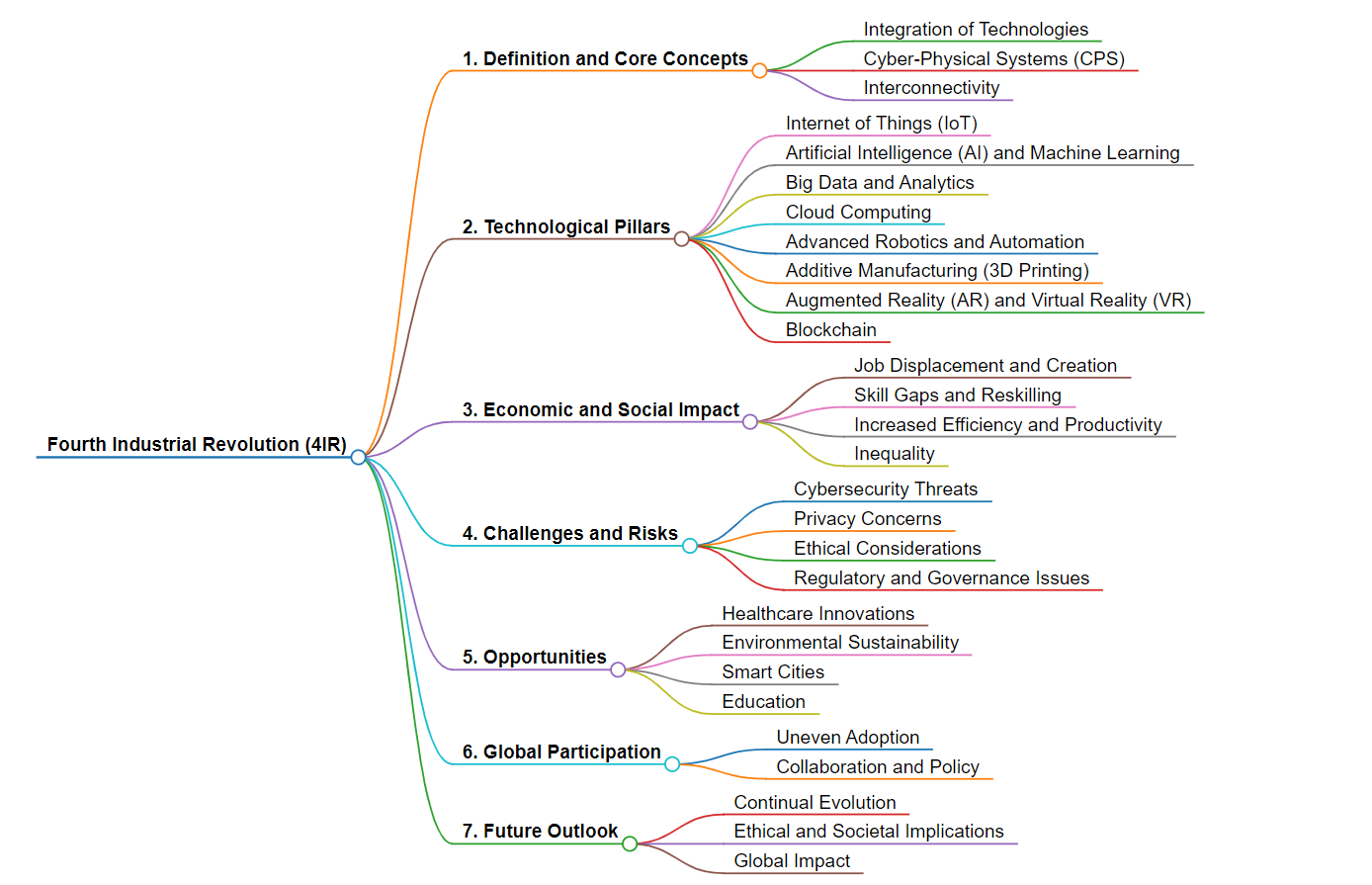The Fourth Industrial Revolution, also known as Industry 4.0, represents a fundamental change in the way we live, work, and relate to one another. It is characterized by a range of new technologies that are fusing the physical, digital, and biological worlds, impacting all disciplines, economies, and industries. Below are the key points that detail the Fourth Industrial Revolution:
1. Definition and Core Concepts
– Integration of Technologies: It blurs the lines between the physical, digital, and biological spheres.
– Cyber-Physical Systems (CPS): The core of Industry 4.0, characterized by the fusion of computation, networking, and physical processes.
– Interconnectivity: Devices, machines, sensors, and people connecting and communicating with each other.
2. Technological Pillars
– Internet of Things (IoT): Devices connected to the internet, collecting and sharing data.
– Artificial Intelligence (AI) and Machine Learning: Systems that can learn, adapt, and potentially act autonomously.
– Big Data and Analytics: Large volumes of data analyzed to inform decision-making processes.
– Cloud Computing: On-demand availability of computer system resources, especially data storage and computing power.
– Advanced Robotics and Automation: Robots with enhanced senses, dexterity, and intelligence.
– Additive Manufacturing (3D Printing): Creating three-dimensional objects by adding layer upon layer of material.
– Augmented Reality (AR) and Virtual Reality (VR): Immersive technologies that can enhance or create new experiences.
– Blockchain: A system of recording information in a way that makes it difficult or impossible to change, hack, or cheat the system.
3. Economic and Social Impact
– Job Displacement and Creation: Automation may displace workers in certain sectors while creating new opportunities in others.
– Skill Gaps and the Need for Reskilling: As jobs evolve, there will be a significant need for retraining workers.
– Increased Efficiency and Productivity: Automation and optimization can lead to higher productivity and efficiency.
– Inequality: There’s a risk that the benefits of the Fourth Industrial Revolution might not be distributed equally, potentially leading to greater inequality.
4. Challenges and Risks
– Cybersecurity Threats: Increased connectivity increases the risk of cyberattacks.
– Privacy Concerns: The collection and analysis of vast amounts of personal data raise significant privacy issues.
– Ethical Considerations: The development and use of AI and biotechnology pose ethical questions.
– Regulatory and Governance Issues: Existing laws and regulations may be inadequate to address the new challenges posed by these technologies.
5. Opportunities
– Healthcare Innovations: Personalized medicine, wearables, and telemedicine can enhance healthcare delivery.
– Environmental Sustainability: Technologies can help monitor and reduce environmental impact.
– Smart Cities: Enhanced urban infrastructure leading to more sustainable and efficient living environments.
– Education: Personalized learning experiences through AI and digital platforms.
6. Global Participation
– Uneven Adoption: The pace of adoption varies widely between countries and industries.
– Collaboration and Policy: International cooperation and policy-making are crucial to harness the benefits while mitigating the risks.
7. Future Outlook
– Continual Evolution: The Fourth Industrial Revolution is an ongoing process that will continue to evolve with advancements in technology.
– Ethical and Societal Implications: There will be ongoing debates about the ethical implications and societal impacts of these technologies.
– Global Impact: Its effects will be felt globally, influencing economies, policies, and cultures.
The Fourth Industrial Revolution represents a seismic shift in how we interact with technology and each other. While it offers tremendous potential benefits, it also presents significant challenges that require careful management and global cooperation.

